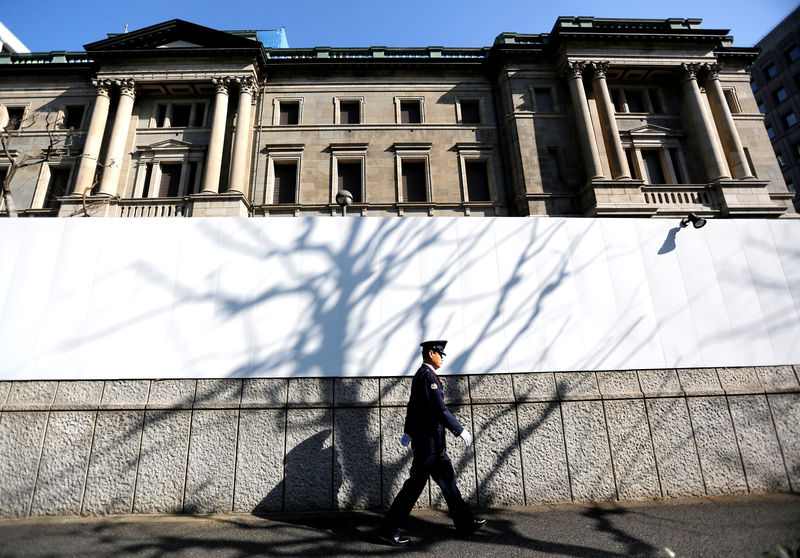By Leika Kihara and Daniel Leussink
TOKYO (Reuters) - The Bank of Japan kept monetary policy steady on Thursday, preferring to save its dwindling ammunition as a darkening global growth outlook prompts other major central banks to drop hints of additional stimulus.
But the BOJ stressed anew that global risks were increasing as trade tensions and uncertainty over U.S. economic policies jolt financial markets, signaling that it, too, is leaning more toward ramping up - not whittling down - monetary support.
As widely expected, the BOJ maintained its short-term rate target at -0.1% and a pledge to guide 10-year government bond yields around zero percent.
It also kept intact a loose pledge to keep buying government bonds so the balance of its holdings increase by roughly 80 trillion yen ($738 billion) per year.
"Downside risks regarding overseas economies are big, so we must carefully watch how they affect Japan's corporate and household sentiment," the BOJ said in a statement announcing the policy decision.
Central banks across the globe are tilting towards easing as the escalating U.S.-China trade war adds pressure on the slowing world economy.
The U.S. Federal Reserve kept interest rates steady on Wednesday but signaled it was ready to battle risks by cutting rates beginning as early as next month.
The more dovish outlook saw the yen strengthen against the weakened dollar.
Australia's top central banker on Thursday said it was not "unrealistic" to expect a further reduction in rates given ample slack in the labor market. It cut rates to a record low earlier this month.
Many Japanese policymakers, however, are wary of expanding stimulus any time soon, as years of heavy money printing have left them with little ammunition.
Some analysts say the BOJ could strengthen its forward guidance and pledge to keep current ultra-low rates longer than it promises to do so now, if future Fed rate cuts trigger an unwelcome yen spike that hurts Japan's exports.
"There's a good chance the Fed will cut rates in July. If that happens, the BOJ will strengthen its forward guidance to keep yen rises in check," said Izuru Kato, chief economist at Totan Research.
"The BOJ's next move will depend on how the U.S. economy performs and how Washington's trade war with China progresses."
At its previous rate review in April, the BOJ adopted a forward guidance that pledges to keep current ultra-low rates at least until around spring of next year.
Japan's economy expanded by an annualized 2.1% in January-March but many analysts predict growth to slow in coming quarters as the U.S.-China trade row hurts global trade. A scheduled sales tax hike in October may also curb consumption.
Annual core consumer inflation hit 0.9% in April, remaining distant from the BOJ's 2% target, despite years of massive and radical stimulus.
A Reuters poll released this week showed expectations of the BOJ's next move have shifted amid growing concerns about the economic outlook.
For more than two years, a majority of economists surveyed have said its next policy change would be to tighten the money taps with an eye to "normalising" settings that have long been at crisis levels.
But now, half the analysts polled June 5-17 said the BOJ's next step would be to ease even further.

($1 = 108.4000 yen)